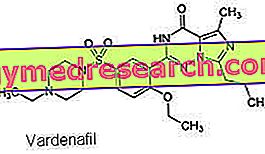SALAZOPYRIN ® is a drug based on Sulfasalazine
THERAPEUTIC GROUP: Intestinal anti-inflammatory
IndicationsAction mechanismStudies and clinical effectiveness Usage and dosage instructionsWarnings Pregnancy and lactationInteractionsContraindicationsUndesirable effects
Indications SALAZOPYRIN ® Sulfasalazine
SALAZOPYRIN ® is a medicinal specialty used in the treatment of inflammatory bowel diseases such as ulcerative rectal colitis, Crohn's disease and rheumatoid arthritis with intestinal involvement.
Mechanism of action SALAZOPYRIN ® Sulfasalazine
SALAZOPYRIN ® is a drug based on Sulfasalazine, a molecule obtained from the chemical fusion of an antibiotic belonging to the category of sulfonamides such as Sulfapiridine and of an anti-inflammatory such as salicylic acid.
Taken orally, using gastro-resistant tablets, Sulfasalazine reaches the intestinal environment where it is minimally absorbed by the small intestine to be subsequently eliminated with bile, while largely separated from the intestinal flora in the two metabolites with therapeutic activity such as:
- Sulfapyridine, which by inhibiting the synthesis of folic bacterial acid, is able to perform a bacteriostatic action first locally, then systematically, directed to the intestinal level both with respect to the resident flora and to pathogenic elements and Clostridia;
- 5aminosalicylic acid, capable of inhibiting the Cycloxygenase enzymes responsible for the synthesis of inflammatory mediators such as prostaglandins, prostacyclines and thromboxanes, thus reducing the persistent inflammatory stimulus during auto-inflammatory pathologies such as ulcerative colitis, Crohn's disease and rheumatoid arthritis.
Both active ingredients, once carried out mainly at the intestinal level, are largely eliminated through the faeces and only minimally as a result of acetylation with the urine.
Studies carried out and clinical efficacy
SULFASALAZINA AS AN ANTICANCER
Experimental study that tests Sulfasalazine as a potential antitumor agent, effective in reducing the incidence of relapses of pancreatic cancer.
However, statistically significant clinical evidence is still lacking
PROBIOTICS IMPROVE THE METABOLISM OF THE SULFASALAZINE
Work demonstrating how treatment with probiotics can improve the intestinal metabolism of sulfasalazine, enhancing the antibiotic and anti-inflammatory intestinal activity, thus improving the clinical conditions of the patient suffering from inflammatory diseases.
SULFASALAZINE RESPIRATORY SYNDROME
Case report denouncing the appearance of a severe respiratory syndrome induced by sulfasalazine hypereosinophilia. These studies emphasize the importance of medical supervision throughout the antibiotic treatment.
Method of use and dosage
SALAZOPYRIN ®
Sulfasalazine 500 mg gastro-resistant tablets.
The therapeutic scheme related to the use of SALAZOPYRIN ® varies considerably depending on the type of pathology, the clinical picture present and the physiopathological characteristics of the patient.
In principle, the intake of 2-4 tablets 4 times a day, according to increasing or decreasing regimes, is sufficient to guarantee a remission of both symptoms and histology.
Warnings SALAZOPYRIN ® Sulfasalazine
The use of SALAZOPYRIN ® must necessarily be preceded and constantly supervised by a specialist doctor, who must periodically monitor the blood count, the markers of liver and kidney function, adapting the therapy when necessary.
The use, especially over time, of this medicine could lead to the appearance of allergic reactions, sometimes with a serious clinical course, crystalluria, and haemolytic crises in patients with enzyme deficiency of glucose 6 phosphate dehydrogenase.
Consequently, in order to avoid the onset of severe clinical conditions associated with SALAZOPYRIN ® therapy, the doctor should inform the patient about the possible side effects of the therapy, so that the latter can recognize them in time and promptly indicate them to the doctor.
PREGNANCY AND BREASTFEEDING
Although experimental studies do not describe direct damage to the fetus accidentally exposed to sulfasalazine, the ability of this active principle to inhibit the synthesis of folic acid and to concentrate in pharmacologically active concentrations in breast milk, imposes the generic extension of the contraindications to the use of SALAZOPYRIN ® even during pregnancy and subsequent breastfeeding period.
Interactions
In order to reduce the pharmacokinetic variations of Sulfasalazine, therefore the potential side effects of the patient receiving SALAZOPYRIN ® should pay particular attention to the simultaneous use of:
- Oral anticoagulants, due to the lengthening of bleeding times;
- Oral diuretic and hypoglycemic drugs for potential competitive effects;
- Potentially honey, nephro and hepatotoxic drugs due to the increase in possible side effects.
Contraindications SALAZOPYRIN ® Sulfasalazine
The use of SALAZOPYRIN ® is contraindicated in patients who are hypersensitive to the active ingredient or to one of its excipients, in patients with renal insufficiency, liver disease and bleeding diathesis.
These contraindications should also be extended to pregnant women or to the subsequent breastfeeding phase and in newborns, due to the increased risk of hyperbilirubinemia.
Undesirable effects - Side effects
Treatment with SALAZOPYRIN ® could lead to the appearance of numerous side effects distributed between the various organs and systems.
The most frequent ones involve the gastrointestinal tract with nausea, loss of appetite, cramps and diarrhea, the nervous system with headache, insomnia and migraine, the skin potentially exposed to hypersensitivity reactions to the drug, the liver and kidney whose functions could be compromised .
Only rarely have clinically more serious reactions been observed, such as to require the suspension of treatment and hospitalization.
Note
SALAZOPYRIN ® is a drug subject to mandatory medical prescription.



